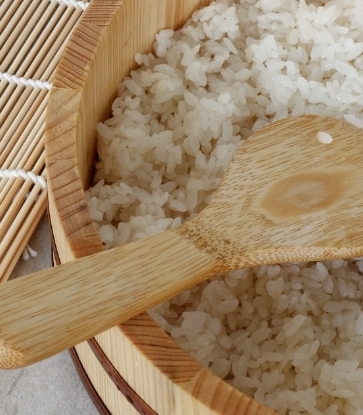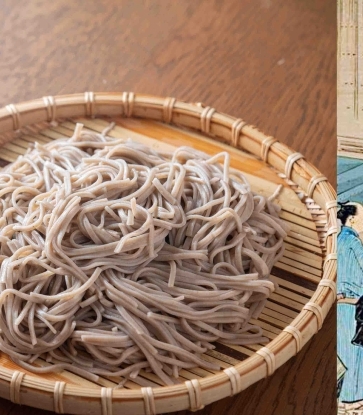
In Singapore, consumers are conditioned to the idea that rice is sold on supermarket shelves, pre-polished, packaged and transported and stored in room temperature; a process that sometimes takes up to two months till it reaches your bowl.
However, Sato explains that rice starts losing its aroma as soon as it is polished, and so it is most ideal to polish the rice just before it is to be consumed. Rice that is not consumed immediately should be kept refrigerated or even frozen to preserve all the nuances of its flavour. In recent years, he's started receiving direct orders from customers who want freshly polished rice for cooking at home. At Tawaraya, he's able to adjust the level of polishing to the customer's preference — brown, half, 70% white and pure white rice, which is the most popular option in Singapore.
Tawaraya Rice supplies over 10 types of rice to Singapore’s top Japanese restaurants, each carefully selected by Sato himself. Traveling to Japan several times a year, he works closely with Japanese farmers of premium rice like Hokkaido Yumepirika, Hokkaido Nanatsuboshi, Niigata Koshihikari, South-Uonuma Koshihikari and Yamagata Tsuyahime.
He rattles off rice names and variety traits effortlessly, a product of his training and hard-earned knowledge as one of Japan’s few certified rice sommeliers — just 50 receive certification every year. We chat with him to find out what it takes to be a rice expert and what fuels his passion.
How did you get interested in rice?
I come from a family of rice farmers in the Niigata prefecture, which is known as Japan’s rice capital. I grew up helping my grandfather on the family farm. Every year in April, we would sow the seeds. In July, we would plant the seedlings and in September, I would help with the harvesting. That’s how I grew to appreciate rice cultivation.
What does it take to become a certified Japanese rice sommelier?
I got my certification from the Kome Shokumi Kanteishi Kyokai (The Rice-based Diet Taste Surveyor Society). The training lasts for three months, during which we learn about the history and varieties of Japanese rice. We have to learn how to explain the differences between the more than 300 varieties of rice in Japan and how best to cook them. There is a written exam and a blind tasting at the end of it. About 50 people get certified each year. There are about 1000 certified rice sommeliers in Japan now and I am the only one in Singapore.

There are four things to look out for: First, it should look shiny and white in appearance. Next, good rice has a distinct fragrance. Third is the taste and, finally, we look at the texture of the rice. That’s how we distinguish each variety of rice as well. For example, Nanatsuboshi rice from Hokkaido is light tasting and its sticky texture makes it best for making sushi and onigiri. On the other hand, Yumeprika from the same region has a fuller flavour and is as white as snow and is best eaten as a white rice on its own.
What keeps you passionate about the rice business?
Producing rice is hard work. Consumption is slowing down and the farmers in Japan are aging — the average rice farmer in Japan is now 60 years old. I work closely with my farmers to build good relationships with them. When I promote Japanese rice, I hope I can do justice to their hard work. In Japanese cuisine, rice is a main component and gives authenticity to the food. I see my role as helping to export authentic Japanese cuisine to the world.
Now I am bringing in a range of organic Global Good Agricultural Practice (GAP) Japanese rice into Singapore. This is the first time Japan is exporting Hyogo Kounotri rice which is named after the oriental white stork. It’s very interesting because when they grew this rice naturally without any chemicals, pesticides or fertilisers, the land and water became so clean that the Japanese cranes came back to this region. I’m also expanding into sake, because you know, good rice makes good sake. I am bringing in about 120 labels of sake now.

























